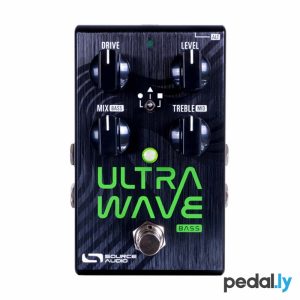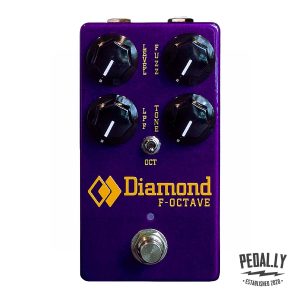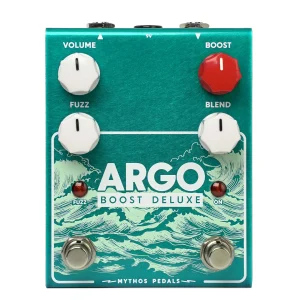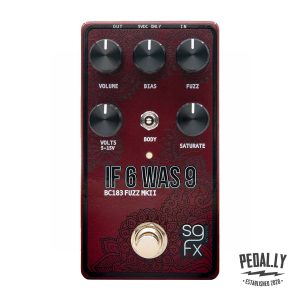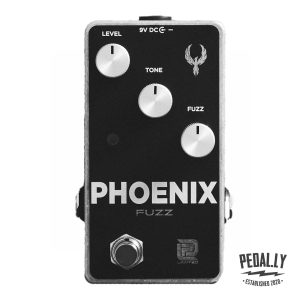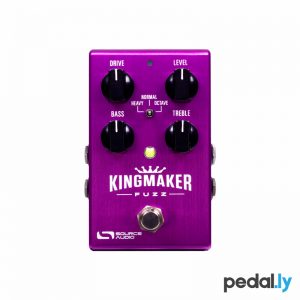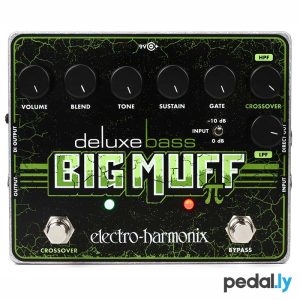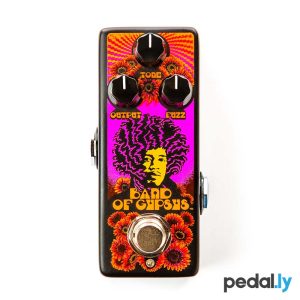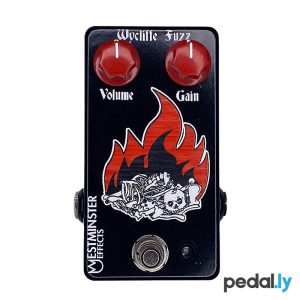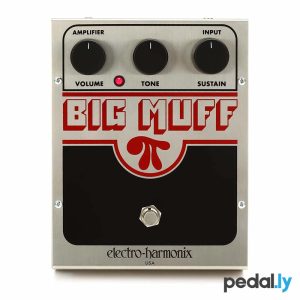Fuzz Pedals
FUZZ PEDALS
-
SolidGoldFX Lysis MkII Polyphonic Fuzz Modulator Pedal
$250.00 Add to cart -
Walrus Audio Eons Five-State Fuzz Pedal
$249.99 Add to cart -
Source Audio Ultrawave Multiband Bass Processor Pedal
$249.00 Add to cart -
MXR Poly Blue Octave Pedal (M306)
$235.99 Add to cart -
Diamond F-Octave Fuzz Pedal
$229.00 Add to cart -
Mythos Argo Boost Deluxe Pedal
$229.00 Add to cart -
Spaceman Sputnik III Cadet: Germanium Fuzz Pedal
$219.00 Add to cart -
SolidGoldFX If 6 Was 9 MKII Fuzz Pedal
$199.00 Add to cart -
SolidGoldFX 76 MKII Octave Fuzz Pedal
$199.00 Add to cart -
EarthQuaker Devices Park Fuzz Sound Pedal
$179.00 Add to cart -
LPD Phoenix Fuzz Pedal
$169.00 Add to cart -
Source Audio Kingmaker Fuzz Pedal
$169.00 Add to cart -
Dunlop Authentic Hendrix™ ’68 Shrine Series Fuzz Face® Distortion Pedal
$159.99 Add to cart -
Pigtronix Space Rip Guitar Synth
$179.00Original price was: $179.00.$159.00Current price is: $159.00. Add to cart -
Electro-Harmonix Deluxe Bass Big Muff Pi Bass Fuzz Pedal
$150.69 Add to cart -
Dunlop Authentic Hendrix™ ’68 Shrine Series Band Of Gypsys™ Fuzz Pedal
$149.99 Add to cart -
Westminster Effects Wycliffe Fuzz Pedal
$149.99 Add to cart -
Mythos Hephaestus Mini Variable Voltage Fuzz Pedal
$139.00 Add to cart -
Electro-Harmonix J Mascis Ram’s Head Big Muff PI Fuzz Pedal
$131.50 Add to cart -
Electro-Harmonix Ram’s Head Big Muff Pi Fuzz Pedal
$114.30 Add to cart -
Electro-Harmonix Green Russian Big Muff Pi Fuzz Pedal
$108.90 Add to cart -
Electro-Harmonix Big Muff Pi (Classic) Fuzz Pedal
$101.60 Add to cart -
Walrus Audio Fundamental Series Fuzz Pedal
$99.99 Add to cart -
Electro-Harmonix Lizard Queen Octave Fuzz Pedal
$99.00 Add to cart -
Electro-Harmonix Op-Amp Big Muff Fuzz Pedal
$96.20 Add to cart -
Electro-Harmonix Nano Big Muff Pi Fuzz Pedal
$87.10 Add to cart -
Electro-Harmonix Satisfaction Fuzz Pedal
$69.10 Add to cart
What is a fuzz pedal?
A fuzz pedal is a type of effects pedal used by guitarists to create a distinctive distortion sound. Unlike other distortion pedals that simply amplify the guitar’s signal and add harmonic overtones, a fuzz pedal creates a more extreme form of distortion that sounds thick, raw, and sometimes even “fuzzy.”
The fuzz effect was first created in the 1960s by guitarists seeking a more aggressive and overdriven sound. It became popular in the genres of psychedelic and hard rock, and has since become a staple effect for many guitar players.
A typical fuzz pedal contains a set of transistors or diodes that clip and distort the guitar signal, producing a unique, harmonic-rich sound. Some fuzz pedals also include tone-shaping controls, such as bass and treble knobs, that allow the player to tailor the effect to their individual preferences.
The fuzz effect is known for its warm, thick, and saturated sound that adds a new level of aggression and energy to a guitarist’s playing. Whether used for lead solos or rhythm parts, a fuzz pedal can be a valuable addition to any guitar player’s effects setup.
Why Choose a Fuzz Pedal?
- Distortion: Fuzz pedals are commonly used to add distortion to a guitar signal. This creates a more aggressive and crunchy sound that can be used for a variety of musical styles, including rock, blues, and metal.
- Sustain: Fuzz pedals can also increase the sustain of a guitar’s notes, making them last longer and allowing guitarists to play more complex and expressive solos.
- Tone shaping: Some fuzz pedals allow guitarists to adjust the tone of the distortion effect, giving them greater control over the character and feel of their sound.
- Creativity: Fuzz pedals can provide guitarists with a new range of tonal possibilities, inspiring new ideas and techniques for their playing.
Which guitarists are known for using a fuzz pedal?
- Jimi Hendrix is often considered one of the pioneers of the fuzz effect, and used a fuzz pedal extensively in his psychedelic blues and rock guitar playing.
- Eric Johnson is known for his virtuosic guitar playing and use of a variety of effects, including a fuzz pedal.
- Jack White of The White Stripes is known for his raw and energetic guitar playing, and often uses a fuzz pedal to create a thick, distorted sound.
- Dave Gilmour of Pink Floyd is known for his bluesy and atmospheric guitar playing, and has used a fuzz pedal in many of his solos to create a more raw and aggressive tone.
- Kevin Parker of Tame Impala is known for his psychedelic and dreamy guitar playing, and often uses a fuzz pedal to add a warm and saturated effect to his playing.
- Billy Corgan, the frontman and guitarist of the alternative rock band Smashing Pumpkins, is known for his distinctive and often heavy guitar sound. He has used a fuzz pedal in his playing as a way to add a thick and saturated tone to his playing.



